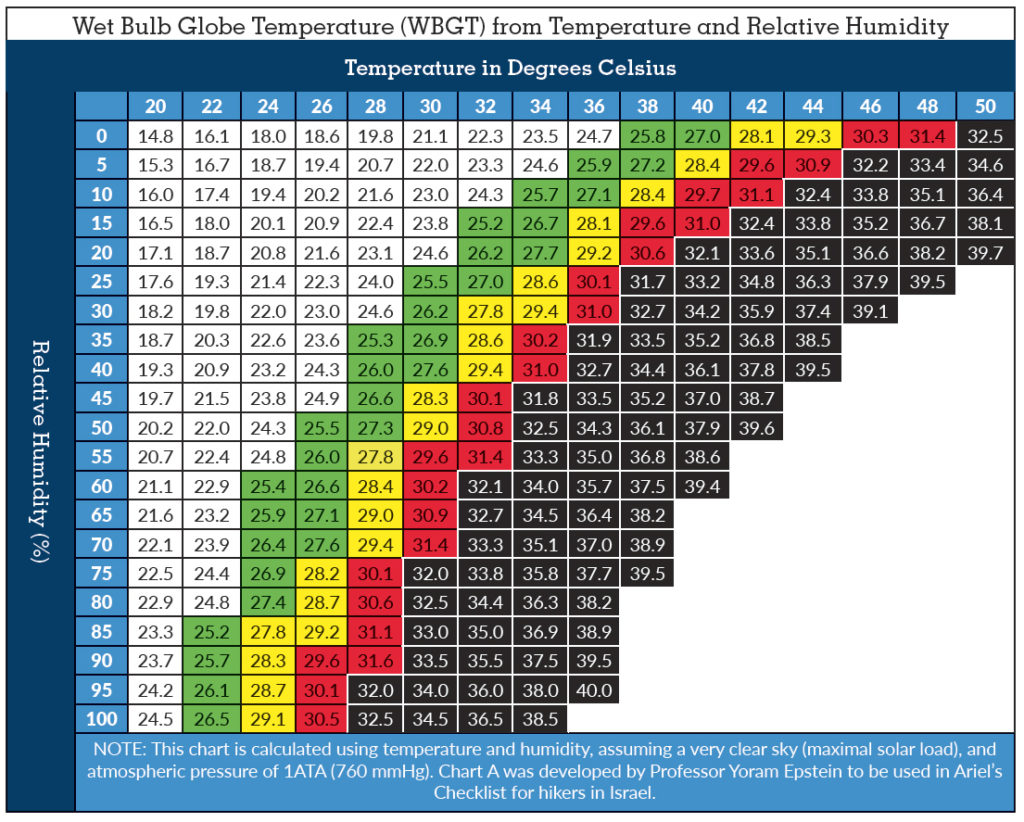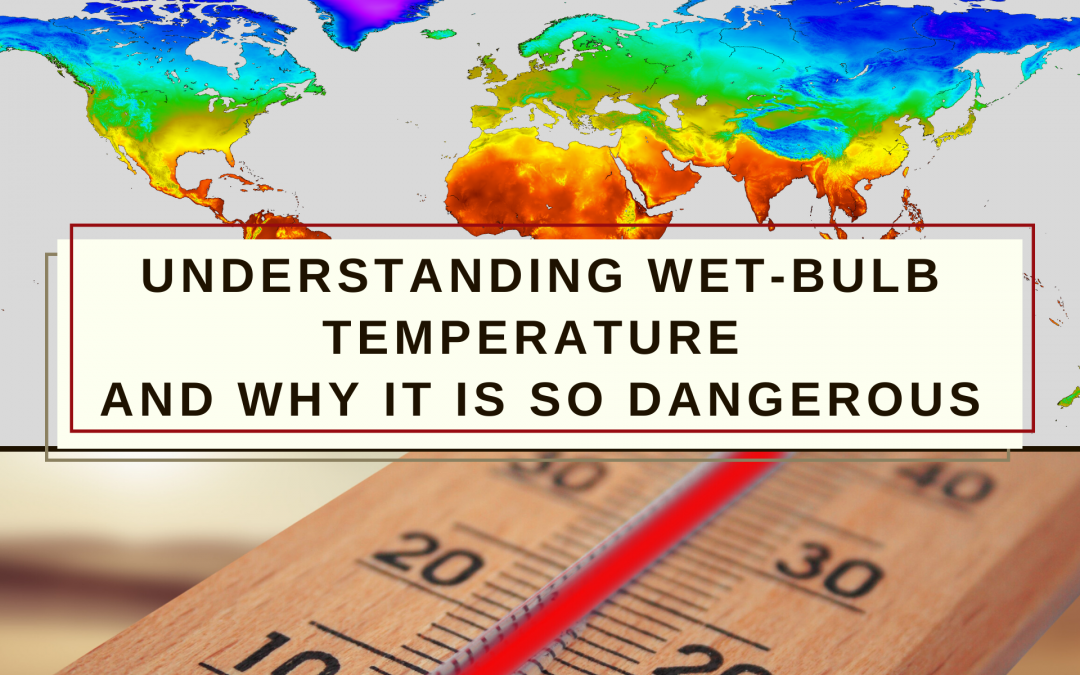Hundreds of millions of people live in a tropical climate near the equator in South/Central America, Africa and Asia. This includes huge countries like Brazil, India, Malaysia and Indonesia. All of these people are in imminent danger from climate change.
To understand why, you need to understand what the so-called Wet Bulb Globe Temperature (WBGT) is and how the human body works. Let me explain.
The condition of the air is mainly defined by the factors temperature and humidity. At any given temperature, air can hold a certain amount of water vapor (relative humidity). If this limit is reached (100% relative humidity) the air becomes oversaturated and we experience liquid water droplets in the air – better known as fog. In those conditions, liquid water can no longer evaporate by itself.
This is no problem in cooler temperatures because the human body will lose excess heat via convection to the cool surrounding air. In warmer temperatures though, our bodies rely on the evaporation of sweat on our skin to cool down. At a low humidity, the surrounding air can take in large amounts of water vapor and the cooling effects of sweating are huge. The coolest possible temperature that can be reached through evaporation of water in any given air condition is called “Wet Bulb Temperature”. At 100% humidity the wet bulb temperature equals the air temperature, because no more water can evaporate and thus no cooling is possible.
If the combination of temperature and relative humidity reaches a certain level, the body can no longer cool down sufficiently through sweating. Especially when physically active, the body creates a lot of excess heat that can very quickly lead to heat stroke and death in bad WBGT conditions.
The following charts* show the danger of physical activity at different combinations of temperature and humidity.


As you can see, in conditions marked as black, any activities outside of air-conditioned rooms are extremely dangerous.
In any IPCC scenario between +2° and +4° of global warming, areas near the equator will experience such conditions on most days of the year and up to a point where not only physical activity but being outdoors in general becomes lethal! These countries will become basically inhabitable.
With further progression of global warming, areas in more moderate climates including Southern Europe and the US will also experience more and more days with “red” or “black” conditions.
So, let’s talk about some consequences from this knowledge:
- Outdoor activities will soon become close to impossible in tropical countries
- Essential activities like farming will need to be moved to controlled environments indoors
- On more and more days in the year, simply being outdoors will be lethal and people will need to find shelter in air-conditioned buildings
- Huge investments will have to be made to allow hydro- or aquaponic farming in a controlled environment instead of labor-intensive traditional farming outdoors
- Other outdoor activities like construction work etc. will also be drastically impaired
- Most tropical countries are poor and the average income is low. Many people live in poverty without any access to A/C.
What does this mean for possible future scenarios?
- The most likely scenario is that many countries will not be able to deal with the adverse conditions caused by global warming.
- The economy in those countries will most likely collapse, posing an additional threat for the people living there.
- Millions of people will become refugees of both global warming and the ensuing economic crisis.
What actions can you take?
- If you live in one of the affected countries, strategically relocate to a region with a more moderate / cooler climate. Do it NOW before everybody else realizes they need to leave.
- Take action for yourself and in your community and initiate adaptive measures.
- Learn to grow food in a hydroponic or aquaponic garden in a controllable environment (e.g. an insulated greenhouse).
- Invest in renewable energy to self-sufficiently run air-conditioning units.
- Invest in a home that is adapted to global warming and can deal with the adverse conditions far better than today’s standard.
If you want to learn more about strategic relocation, check out my post about this difficult topic.
*Charts are courtesy of https://arielschecklist.com/. Visit their website for more information about the dangers of WBGT and the symptoms of heat exhaustion and heat stroke.


Really like this chart! So that is why this week. in staining my deck on a sunny day that started at 80°F and 70% humidity it got unbearable to continue at 88°F and 95% humidity!
Hey Liz!
88°F and 95% humidity is already in a dangerous zone even though 88°F isn’t THAT hot. In combination with the high humidity it’s worse than the dry 100°F+ temperatures they experience out in the western states.
You can find the chart with F units here:
https://arielschecklist.com/wbgt-chart/